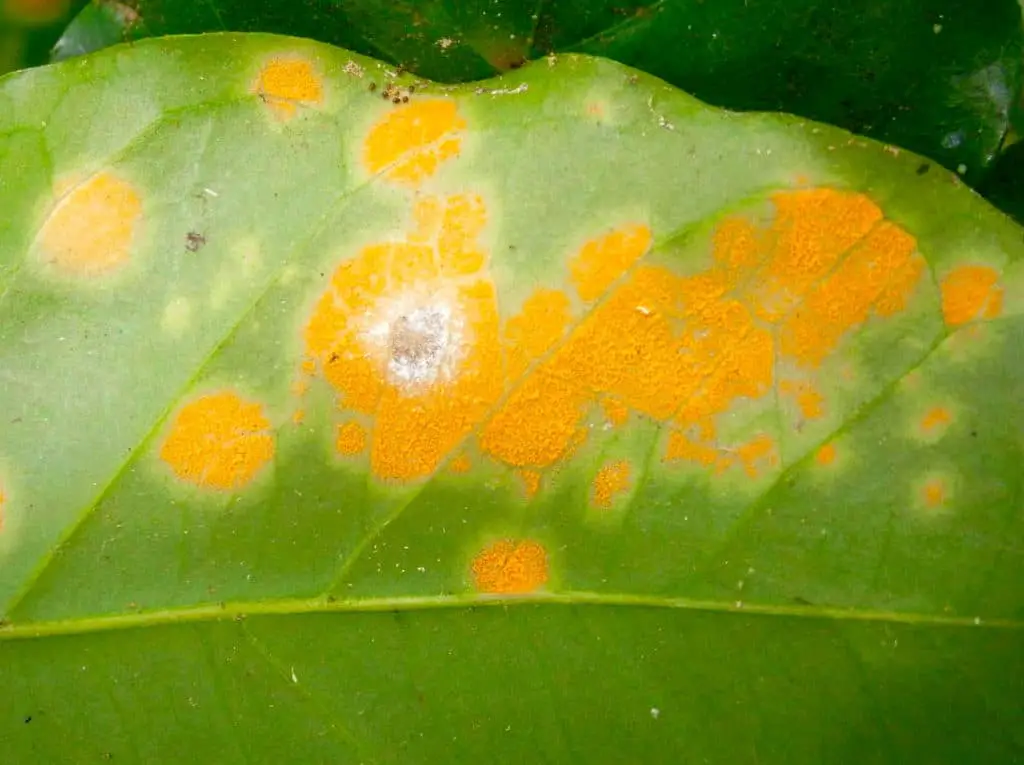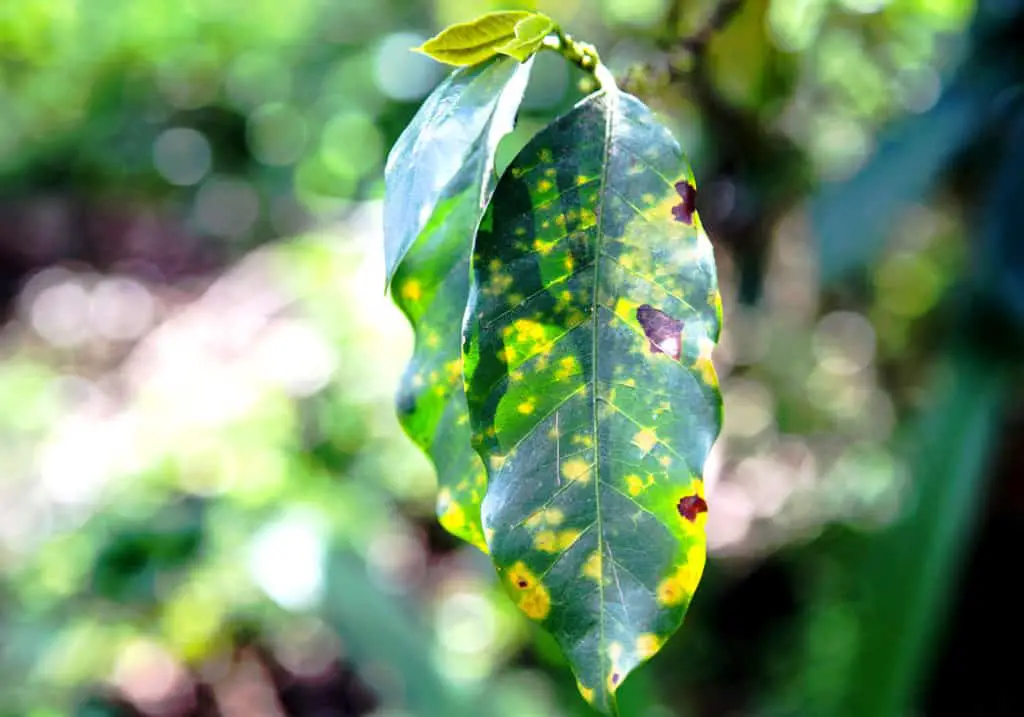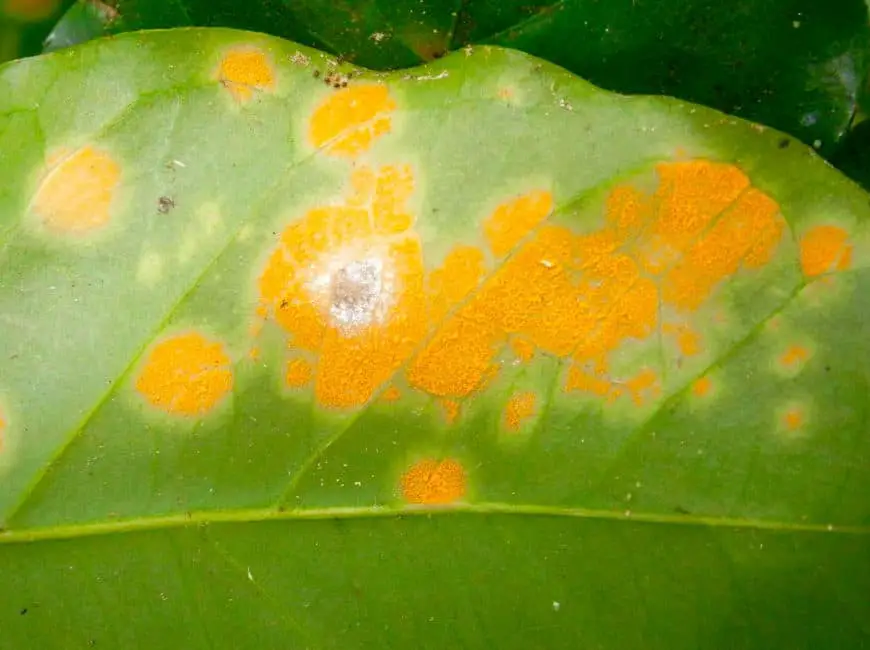
Most people outside the coffee industry haven’t heard of coffee leaf rust, and even fewer understand its impact. Yet, this fungal disease poses a growing threat to coffee lovers and growers worldwide. After digging into the issue, I’ve put together this guide—perfect for beginners and curious coffee drinkers alike—to shed light on coffee rust, its history, its effects, and what’s being done to fight it.
What Is Coffee Rust?
Coffee rust, caused by the fungus Hemileia vastatrix, targets the leaves of coffee plants. It begins as small yellow spots that soon transform into a powdery, yellowish-orange dust—spores ready to spread to nearby plants. Unlike seasonal pests, coffee rust is a persistent invader, requiring farmers to stay vigilant year after year.
This fungus thrives in wet conditions. Infection kicks off when coffee leaves remain moist for 24–48 hours, often during rainy seasons or in areas with heavy dew. The spores, known as urediniospores, latch onto the leaves, forming circular yellow lesions that grow over time.
On the underside, a rusty orange coating of spores develops, giving the disease its name. As it spreads, infected leaves drop, weakening the plant and slashing its ability to produce beans. While the tree may not die immediately, repeated infections can spell its doom—and devastate entire crops.
Wind and rain are the primary culprits in spreading these spores, though insects can play a minor role. Once coffee rust takes hold, it’s a race against time to protect the harvest.
The Origins of Coffee Rust

Coffee became a global sensation in Europe during the 16th and 17th centuries. By the 19th century, when the British colonized Sri Lanka (then Ceylon), they turned it into a coffee powerhouse, exporting 100 million pounds annually. That is, until coffee rust struck.
First documented in 1861 near Lake Victoria in East Africa—likely its origin—the disease soon made a mysterious leap to Sri Lanka by the late 1860s. How it crossed continents remains unclear, but the impact was undeniable. By 1886, Sri Lanka’s coffee empire crumbled, prompting British planters to switch to tea—a legacy that endures today.
For decades, coffee rust remained confined to Africa and Asia, sparing the Americas thanks to geographic isolation. That changed in 1970, when it surfaced in Brazil’s northern coffee regions. Experts suspect it hitched a ride on plants imported from Africa or Asia. Since then, it has spread across the Americas, leaving only Hawaii unscathed among coffee-growing regions.
The Devastating Effects on Coffee Production
Coffee rust doesn’t just harm plants—it disrupts livelihoods and economies. Between 2008 and 2013, Central and South America faced severe epidemics, often linked to low coffee prices or rising fertilizer costs. These conditions left farmers with less money to maintain healthy plantations, making them prime targets for rust.
The toll was staggering: Colombia’s coffee harvest dropped 31% from 2008 to 2011, while El Salvador saw a 54% plunge in 2013–2014. Central America as a whole lost millions of pounds of beans, costing farmers dearly. Thousands of laborers lost jobs, triggering food insecurity and poverty across the region. Globally, coffee shortages drove up prices, hitting consumers’ wallets.
Climate change has only worsened the problem. Rising temperatures and shifting rainfall patterns create ideal conditions for coffee rust, with outbreaks becoming more frequent and severe. Without action, these socio-economic blows could deepen.
Fighting Back: Prevention and Innovation
Coffee rust may be a relentless adversary, but growers and researchers are far from powerless. Armed with a mix of time-tested strategies and cutting-edge science, the coffee industry is pushing back against this fungal threat. From chemical defenses to clever planting hacks and bold genetic experiments, efforts to protect coffee crops are evolving—offering hope that the beans we love can thrive despite the odds.
Fungicides
Copper-based fungicides are a go-to solution, though they must be used cautiously—overuse can poison the soil. Systemic fungicides, which plants absorb, offer another option, but their environmental impact worries some farmers, who reserve them for active outbreaks. Organic alternatives are gaining traction but remain less common.
Smarter Planting
Keeping leaves dry is key. Farmers prune trees, control weeds, and space plants for better airflow. Some plant in full sun to speed drying, while others favor shaded, multi-layered canopies to shield leaves from rain. Both approaches have trade-offs, but they aim to disrupt the moisture coffee rust craves.
Resistant Hybrids
The beloved Arabica (Coffea arabica) species, prized for its smooth flavor, is highly vulnerable to rust. Robusta (Coffea canephora), a hardier but less tasty cousin, resists it better. Breeders have crossed the two, creating hybrids like Hibrido de Timor that blend Arabica’s taste with Robusta’s toughness. However, coffee rust evolves, and new strains could eventually overcome these defenses. Long-term, durable resistance hinges on ongoing genetic research.
Quarantine Measures
There’s no cure for coffee rust, so containment is critical. Infected plants are isolated or destroyed, sometimes along with nearby healthy ones, to stop the spread. Hawaii, still rust-free, enforces strict rules: no imported coffee plants, only local stock, and travelers must clean gear worn in other coffee regions. These measures are a model for prevention.
The Future of Coffee
Coffee rust is a formidable foe, but the industry isn’t giving up. At Colombia’s Cenicafe and other research hubs, scientists are developing rust-resistant hybrids that preserve Arabica’s flavor. Farmers are learning from past outbreaks—spotting early warning signs like poor plant health or wet seasons—and refining techniques to stay ahead.
Could Arabica be replaced by Robusta or hybrids? It’s possible, especially if rust keeps raging. Yet with innovation and vigilance, coffee’s future looks promising. Your morning brew isn’t going anywhere—thanks to the growers and researchers fighting this silent threat.

